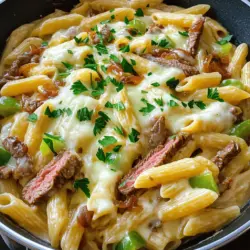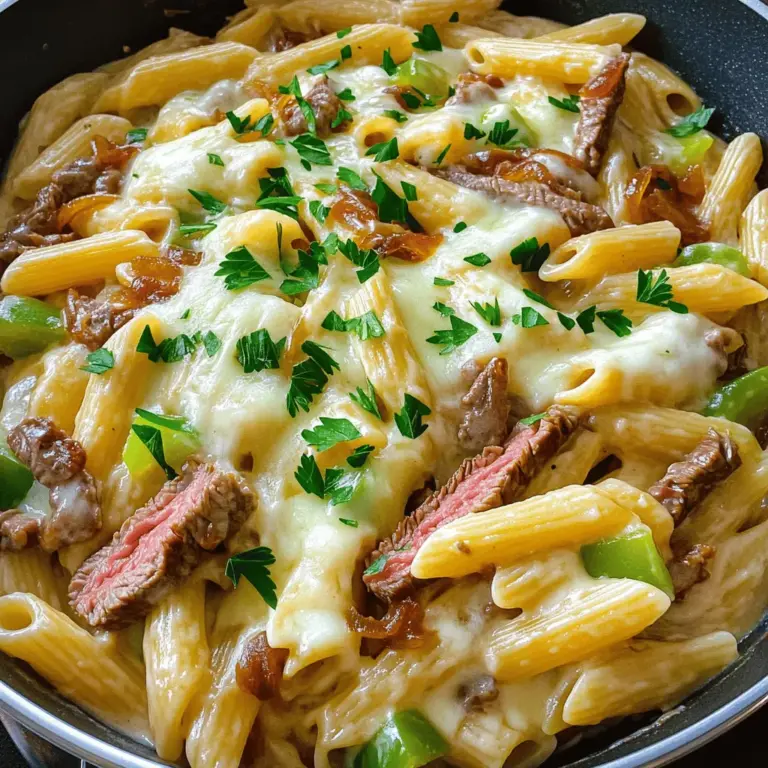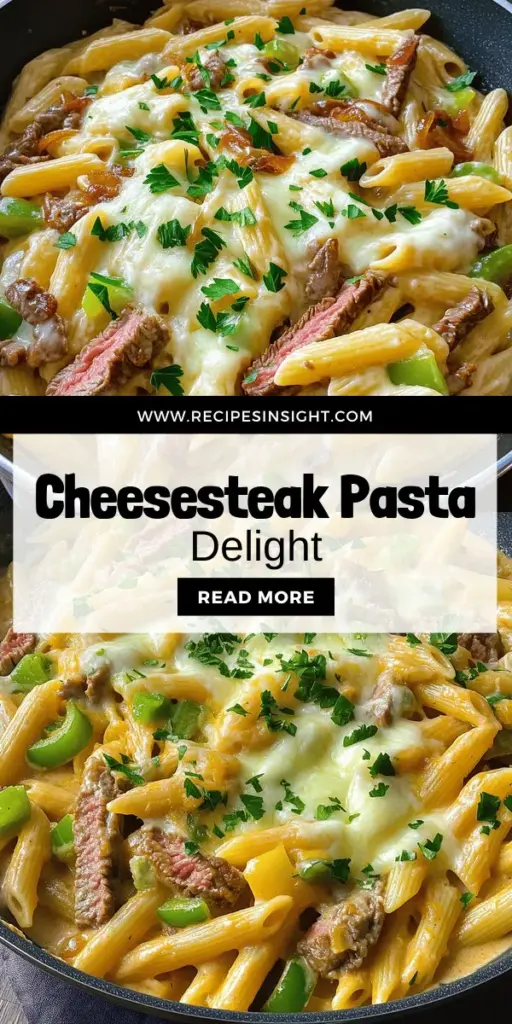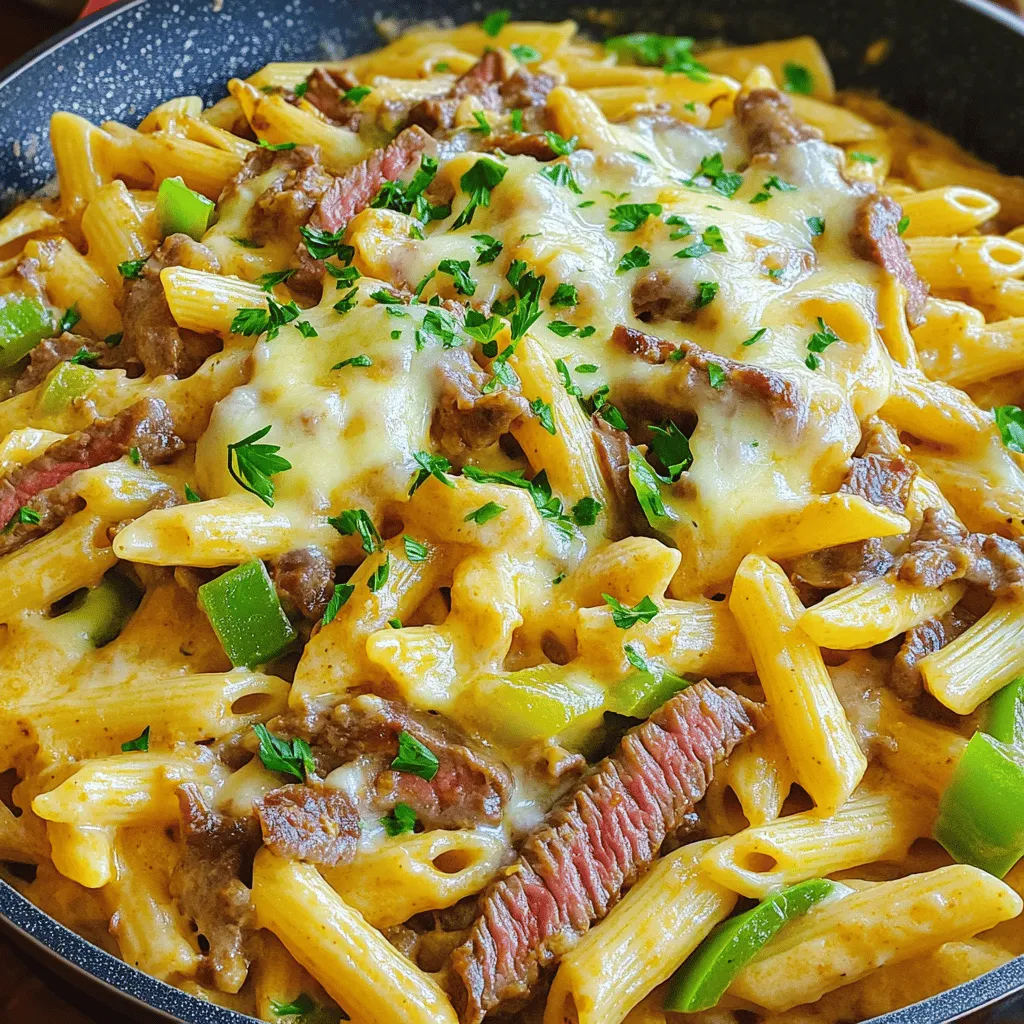Craving a hearty meal that packs a punch of flavor? Philly Cheesesteak Pasta combines the classic tastes of a Philly cheesesteak with the comfort of pasta. You’ll love how easy it is to prepare! In this post, I’ll share the essential ingredients, cooking tips, and steps to create the perfect dish. Let’s dive in and make your next meal exciting and delicious!
What Ingredients Do I Need for Philly Cheesesteak Pasta?
To make a great Philly cheesesteak pasta, you need a mix of tasty ingredients. The base starts with penne pasta. You can use other shapes, but penne holds sauce well. The ribeye steak is key. It gives the dish its classic flavor.
What Types of Meat Work Best in This Dish?
Ribeye steak is the best choice. It is tender and rich in flavor. You can use sirloin or flank steak if you prefer. Just make sure to slice the meat thinly. This helps it cook quickly and stay juicy.
What Vegetables Are Essential for a Classic Flavor?
For a classic taste, use green bell peppers and onions. They add sweetness and crunch. Garlic is also important. It brings a nice aroma and deepens the flavor. You can add other veggies like mushrooms if you like. Just remember, keep them simple to stay true to the dish.
Which Cheeses Pair Well with Philly Cheesesteak Pasta?
The star cheese is provolone. It melts beautifully and adds a creamy texture. You can also mix in cream cheese for extra richness. Some people enjoy adding mozzarella for a gooey effect. Choose your favorite cheese, but keep it classic for the best flavor.
With these ingredients, you can make a delicious Philly cheesesteak pasta. For the full recipe, check out the detailed cooking steps!
How Do I Prepare the Pasta for This Recipe?
To make Philly cheesesteak pasta, start with the right pasta. I recommend penne pasta. It holds the sauce well.
What Is the Best Method for Cooking Pasta?
Boil water in a large pot. Add salt for flavor. Once the water bubbles, add the penne. Stir the pasta to keep it from sticking. Cook according to the package.
How Do I Achieve the Perfect Al Dente Texture?
Al dente means the pasta is firm but not hard. Check the pasta a minute before the time ends. It should be chewy but not gummy. Drain the pasta when ready and set it aside.
Should I Rinse the Pasta After Cooking?
Do not rinse the pasta. Rinsing removes the starch. This starch helps the sauce stick. Keep it as is for the best flavor.
Now your pasta is ready for the full recipe!



